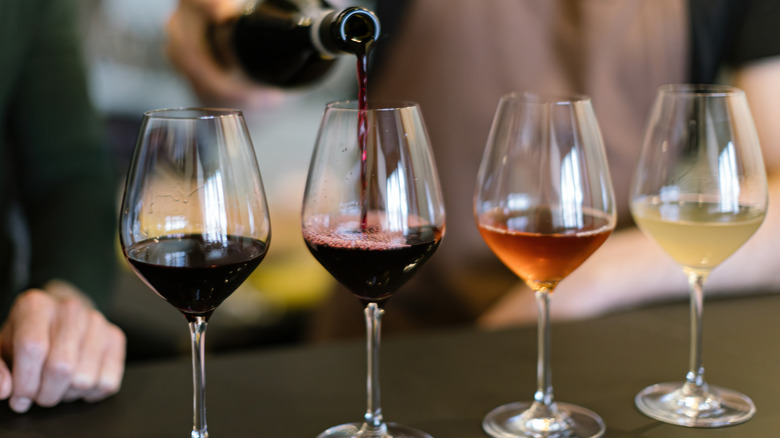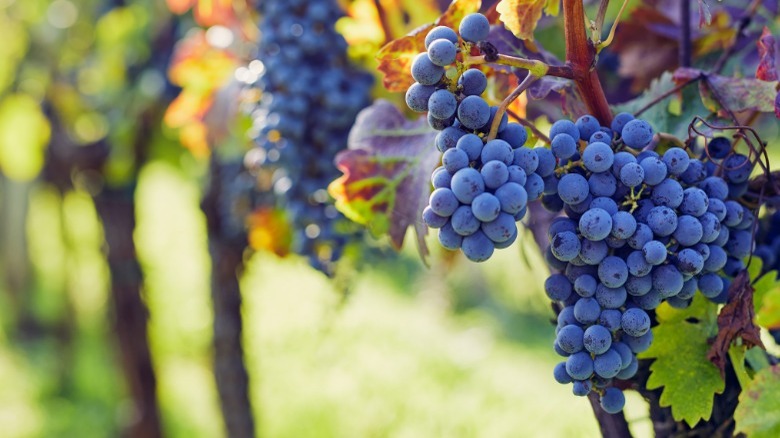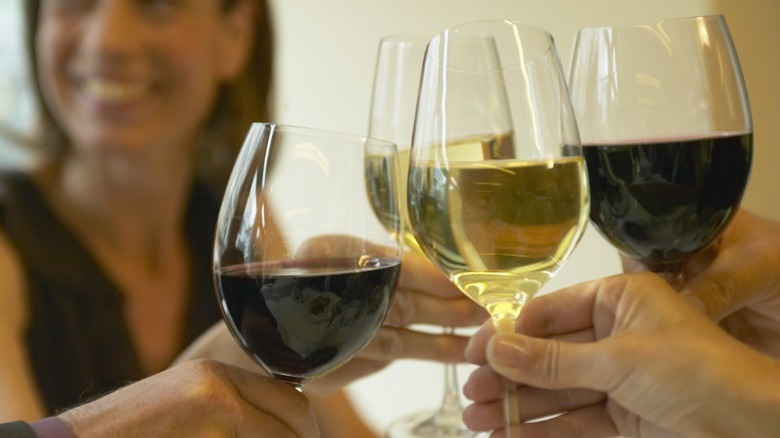The Reason Some Wine Is More Alcoholic Than Others
Wine comes in any number of hues and flavor profiles, and is crafted from grapes grown at vineyards in a variety of climates in locations around the world. Along with the branding and the bottle's origin, every wine bottle has an alcohol percentage listed on its label that ranges anywhere from about 5% to over 20%. But what actually goes into determining why some wine is more alcoholic than others?
Among the myths you should stop believing about wine is that a bottle's alcohol content is due to the grapes alone. What the ABV really comes down to is how these grapes are processed, and how much sugar they contain when they're harvested — the farmer has a direct role in determining these factors. Generally, the more sugar that exists in the grapes upon harvest, the higher the ABV of their resulting wine. However, the sugar content in the grapes is also decided by several factors that are influenced by the winemakers themselves.
Why does production matter?
ABV comes down to how the grapes are treated before harvest and during the production process. When grapes are harvested, they have a certain amount of sugar in them, and once this sugar undergoes fermentation, alcohol is produced. So to control alcohol levels, winemakers harvest grapes at specific ripenesses. The riper the grape, the more sugar there is to undergo fermentation. If they want their wines to have a lower ABV, the grapes have to be harvested earlier in the season.
What's thrown a wrench in the amount of control that vineyards have is global warming. Hotter climates mean that grapes ripen faster and produce higher ABV wines. However, winemakers have several methods to lower alcohol content, including stopping the fermentation process (and thus the development of alcohol) by exposing the wine to colder temperatures — called cold stabilizing. Another method of decreasing the ABV of a wine is humidification or "watering back." This involves adding water to the juice (also known as must) to dilute it before fermentation.
Wines can also undergo reverse osmosis to decrease their alcohol. This process is a lot more intensive and expensive but is best when the winemakers want to reduce the ABV and keep the wine's flavor. Reverse osmosis uses a membrane to separate liquids from solids, which creates a solution where the ethanol can be removed from the water in the wine. The solids are then added back to the reduced-alcohol wine, restoring flavor and tannins.
The ABV highs and lows
While most wines exist in an ABV range from 11% to 13%, some wines fall far below and far above in terms of their alcohol content. To start with the overachievers, several wine varieties are known for having higher-than-average alcohol content. Fortified wines like port from Portugal or Marsala wine from Italy are likely to have an ABV of around 20%. If you want to spice up your port even more, it's often used in cocktails like the Japanese Fizz. In the non-fortified realm, muscat is a sweet wine with an alcohol content of around 15 percent that pairs well with desserts.
Low-alcohol wines are considered to be those with ABVs under 11%. Moscato wines typically have a very low alcohol content — usually around 6%. Although grapes with lots of sugar in them usually equate to high alcohol content, the fermentation process for Moscato is carefully done by winemakers to stop that sugar from converting into alcohol. This allows the Moscato to remain sweet with a low ABV. Gamay, Vinho Verde, and Riesling are additional wines that fall into the low-alcohol category.



